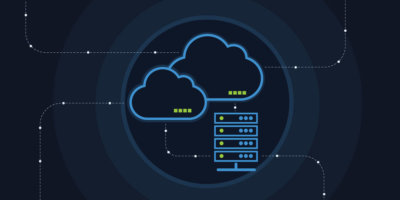As the network continues to evolve in size and complexity, and enterprises are asking more of their network teams, the benefits of adopting a hybrid cloud infrastructure have outweighed any potential risks associated with it.
However, one of the biggest barriers to transformation is the typical enterprise, which must be modernized to be able to connect multiple clouds and resources. The reality of the situation is that not all organizations are able to rip-and-replace what they’ve already built, which means they have to find ways to make their current environment evolve to fit the new hybrid landscape. There are many forms of traditional compute, storage, and networking resources that will need to be fully integrated into any cloud compute or networking plan.
The only way to truly bridge the gap between public cloud, private cloud, and traditional enterprise infrastructure is by leveraging an integrated automation platform.
Why Integration is Key to Automate Hybrid Cloud Network Infrastructure
Networking must adapt to this hybrid and multi-cloud reality, without losing the ability to connect to traditional infrastructure, including routers, switches, and firewalls, which remain the lifeblood of connectivity for enterprise IT assets. Networking infrastructure has developed over the past decades as waves of computing paradigms have transformed IT organizations. With this evolution, it has become more challenging to maintain this diverse environment spanning legacy enterprise to cloud native.
A lot of teams find themselves asking, “What is the network anymore?” It’s a fair question as it’s not just physical routers and switches. It’s also cloud transit gateways and traditional enterprise networks. This evolution has created many networking islands, all equipped with their own networking tools, languages, and management systems.
Organizations are rethinking how to move from the silos and domains and build network automation strategies that encompass hybrid environments. The only way to achieve this is with an integrated platform.
The Building Blocks of Integrated Hybrid Cloud Automation
Enterprise end users see networks as key to the delivery of hybrid and multi-cloud environments but there is one problem – most networks aren’t ready to do that. Most networks still live among silos.
A new kind of network automation is needed remove those silos and truly enable teams to automate across their entire hybrid infrastructure, one that takes an integrated approach needed to coordinate the entire realm of networks. While this sounds great in theory, the question is how do teams get there?
It’s crucial that multi-cloud and hybrid cloud networking be driven by software automation. The good news is that many of that many of the software building blocks are already available to integrate the wide variety of networking platforms, from traditional enterprise to the cloud.
Let’s break down some of the key elements needed to automate hybrid networks:
Networking Orchestration & Configuration Standards
Industry standards and data models such as NETCONF/YANG, OpenConfig, or APIs enable network automation and orchestration by providing standardized software models that allow networking hardware to be programmed with code – a movement known as infrastructure as code.
APIs
The standard software hooks provided by individual networking vendors and OEMs have already been a crucial element of data center and SD-WAN virtualization. By enabling any platform, hardware, or software to expose software connectivity in the form of code, they will become increasingly important to automate hybrid cloud networking.
Infrastructure as Code
Tools coming out of the cloud world that enable network elements to be managed and orchestrated directly from within the code of an application. This will make network programmability part of the cloud software fabric, paving the way for integrated, hybrid cloud networking.
Software Overlays & Service Mesh
Networking software overlays enable applications and networks to be segmented using software only, rather than requiring separate logical hardware-based networks. But overlays are sometimes just a band-aid. Multi-cloud networking will take this a step further by enabling deeper management, segmentation, security, and control of cloud networks.
Integration with L2/L3 Networking Fabric
The L2/L3 networking fabric, often referred to as the “underlay” because it directly operates the control plane of the networking hardware, will remain important because a network can’t exist without hardware or underlay. However, with the rise of software overlays, some engineering factions believe the L2/L3 will become less important as overlay technologies and infrastructure as code becomes more popular.
Networking-as-a-Service (NaaS)
NaaS as a concept is gathering steam. Think of it as buying a pre-built networking service directly from the cloud rather than building a new network. As cloud infrastructure expands, NaaS implementations will grow in importance as enterprises and other organizations, including service providers, will have opportunities to leverage cloud infrastructure without building new networks themselves.
These building blocks are useful in constructing an integrated hybrid or multi-cloud network, and most enterprises have no desire to take the DIY approach. What many organizations are looking for is a platform like Itential that can automate the process of building an integrated, hybrid cloud network. Our products provide an easy way to manage physical, virtual, and cloud infrastructure all within one platform. Using APIs, networking standards, and software automation, our platform can tie together any networking domain, whether it’s traditional network infrastructure or SD-WAN branches.
Learn more about what it takes to automate hybrid networks and bridge the gap between domains, download our white paper in collaboration with Futuriom, “Delivering Network Automation in a Hybrid Cloud World.”






